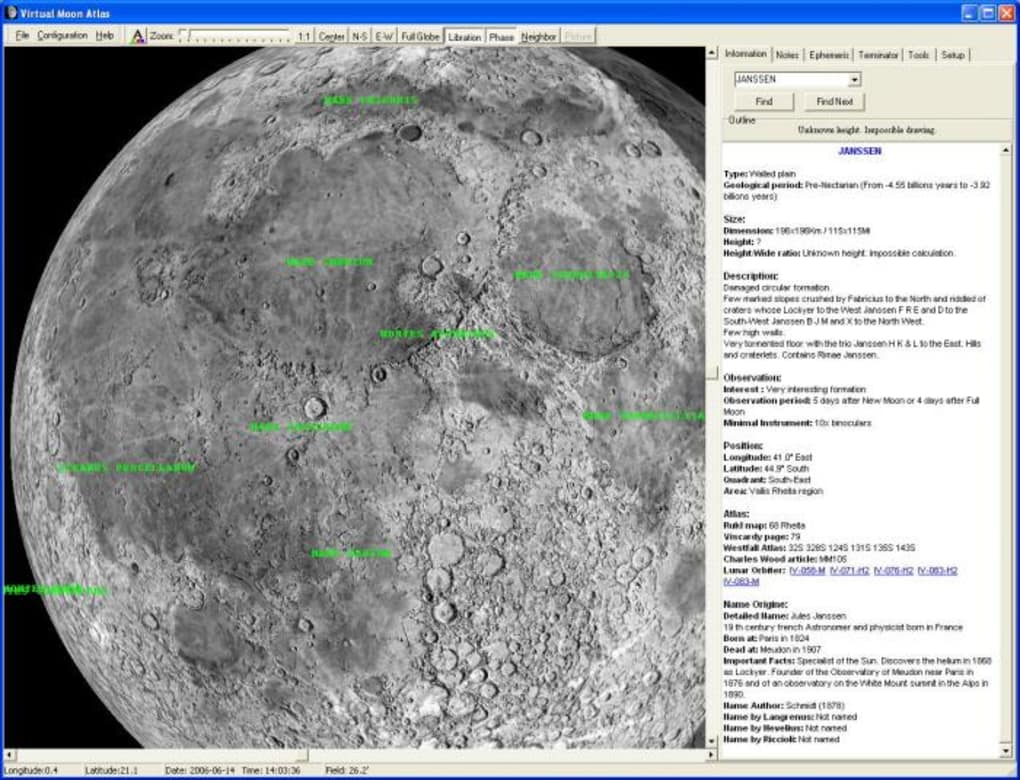
We’ll talk you through current availability and pricing. Gather a list of what you need and give us a call at (413) 397-3587. The walled plain (large crater) Maurolycus has a diameter of 115 km and a depth of 4700 m (Spix 114 km according to Virtual Moon Atlas) it is located in. Whether you’re uncomfortable shopping in-person or simply want to add a weekly local shopping pickup into your routine, we’re happy to put together an order over the phone, pack it up, and bring it out to your car the following day. Their mission will also no doubt produce a lot of new content for the Atlas.Call the store to place an order for next-day contactless pickup. When Artemis astronauts land there, they'll be making use of the Atlas. It contains topographic maps, permanent shadow maps, slope maps, and other images and illustrations of different features of the moon's south pole. The Lunar South Pole Atlas is an interesting collection of data products. That mission was part of the Constellation program, a canceled crewed mission to the moon proposed in the mid-2000s. There were proposed missions to Malapert massif, and one of them was proposed by David Kring, who is also the principal investigator for the Lunar and Planetary Institute.

(2016) Hypsometric Map of the Lunar Polar Areas, Moscow State University of Geodesy and Cartography (MIIGAiK) Kring/CLSEĪ portion of the MIIGAiK Hypsometric Map of the Lunar Polar Areas, fro Moscow University and based partly on SELENE (Kaguya) data.

Credit: NASAĪn image from the briefing for the proposed Constellation mission to to Malapert massif and Shackleton crater. Credit: Lunar Planetary Institute.Īstronauts on the Apollo 8 mission to the Moon took this photograph of mountains rimming the Aitken Basin. Leibniz Beta isn’t labelled, but it’s adjacent to Shoemaker crater. Credit: LPI/CLSEĪn elevation map of the lunar south pole from the LSPA. The elevation change between Leibnitz Beta and the adjacent Shoemaker Crater is about 10 km (6.2 mi). While orbiting the moon, they took a photo of the mountains rimming the south pole Aitken basin. It's also the first crewed mission to leave low-Earth orbit. Apollo 8 was the first mission to orbit the moon, though it didn't land. The astronauts on Apollo 8 also captured images of the south pole mountains. The Lunar South Pole Atlas is a collection of maps, images, illustrations, and data products designed to support NASA's mission. NASA is aiming for an extended human presence on the moon, centered on the south pole region where there are water ice resources. It's next to Shoemaker crater, and the elevation change from the crater to the peak is 10 km (6.2 miles), higher than our own Mt. It has the highest-elevation summit of anything in the region. The second new image in the LSPA is of Leibniz Beta.

The elevation change between Malapert Massif and the adjacent Haworth Crater exceeds 8 km (5 mi). Malapert Massif is adjacent to the Haworth crater, and the change in elevation between the two is greater than 8 km (5 miles). The two images are of Malapert Massif and Leibniz Beta. Scientists with the Lunar South Pole Atlas have created two new images of those mountains that show their elevation compared to Earth's tallest mountain, Mt. That impact may have created the mountains. It's the largest, and also the oldest, impact basin on the moon, and one of the largest in the solar system. The detail and careful labeling makes it a cinch to discover lunar features, whether you're observing with your telescope, binoculars, or naked-eye.
Yellow moon atlas full#
Scientists think that they may be related to the massive impact basin on the moon's south pole, called the south pole-Aitken basin. Based on real images of the Moon, this beautiful, laminated map unfolds to a full 11 x 17 inches. Lunar mountains are called massifs, and the south pole is home to several of them. But the moon also has mountains, and some of them are surprisingly tall. We also think of the vast areas of lava flows, which we call seas, or maria. When we think of the moon's geography, we usually think about craters, which are everywhere, and bear the names of prominent humans.


 0 kommentar(er)
0 kommentar(er)
